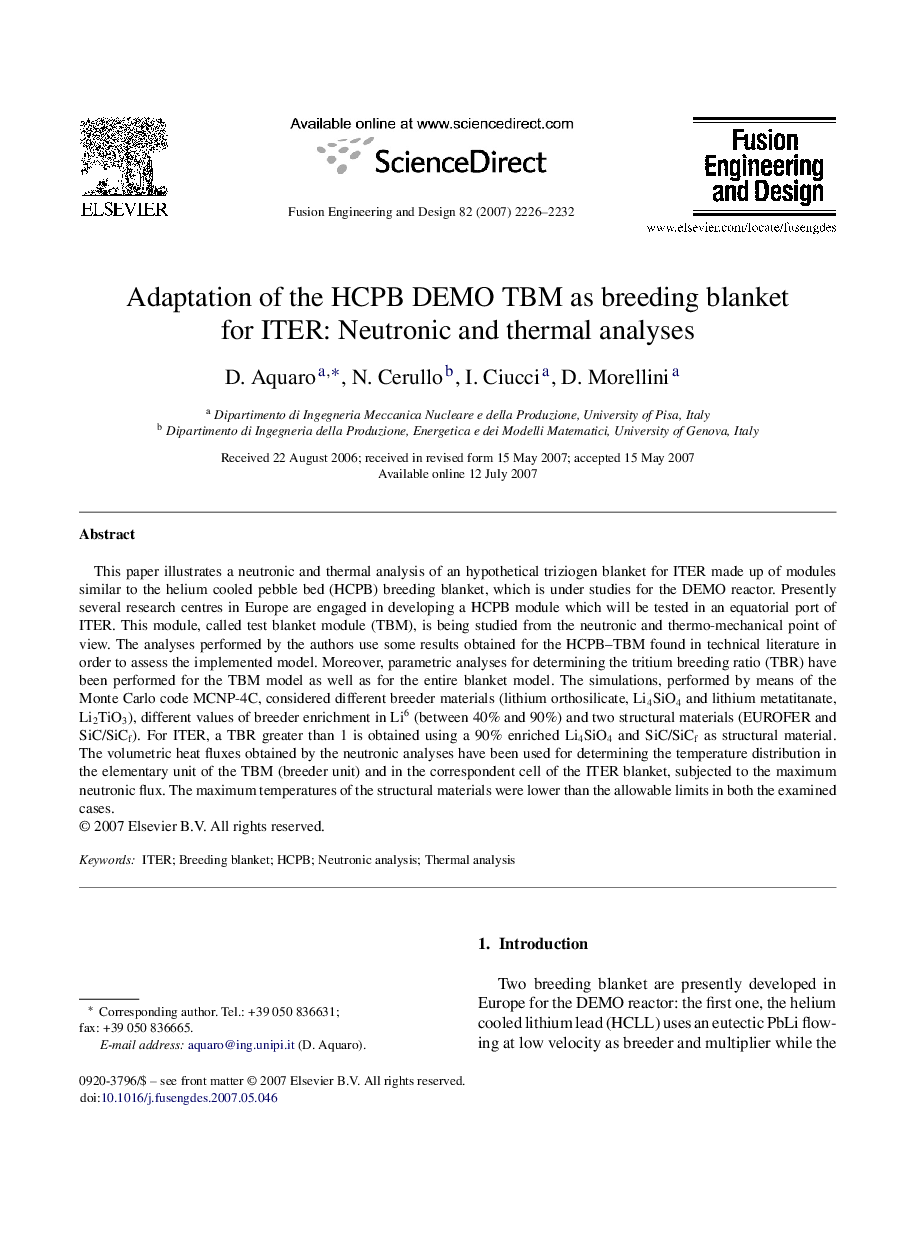| Article ID | Journal | Published Year | Pages | File Type |
|---|---|---|---|---|
| 273630 | Fusion Engineering and Design | 2007 | 7 Pages |
This paper illustrates a neutronic and thermal analysis of an hypothetical triziogen blanket for ITER made up of modules similar to the helium cooled pebble bed (HCPB) breeding blanket, which is under studies for the DEMO reactor. Presently several research centres in Europe are engaged in developing a HCPB module which will be tested in an equatorial port of ITER. This module, called test blanket module (TBM), is being studied from the neutronic and thermo-mechanical point of view. The analyses performed by the authors use some results obtained for the HCPB–TBM found in technical literature in order to assess the implemented model. Moreover, parametric analyses for determining the tritium breeding ratio (TBR) have been performed for the TBM model as well as for the entire blanket model. The simulations, performed by means of the Monte Carlo code MCNP-4C, considered different breeder materials (lithium orthosilicate, Li4SiO4 and lithium metatitanate, Li2TiO3), different values of breeder enrichment in Li6 (between 40% and 90%) and two structural materials (EUROFER and SiC/SiCf). For ITER, a TBR greater than 1 is obtained using a 90% enriched Li4SiO4 and SiC/SiCf as structural material. The volumetric heat fluxes obtained by the neutronic analyses have been used for determining the temperature distribution in the elementary unit of the TBM (breeder unit) and in the correspondent cell of the ITER blanket, subjected to the maximum neutronic flux. The maximum temperatures of the structural materials were lower than the allowable limits in both the examined cases.
